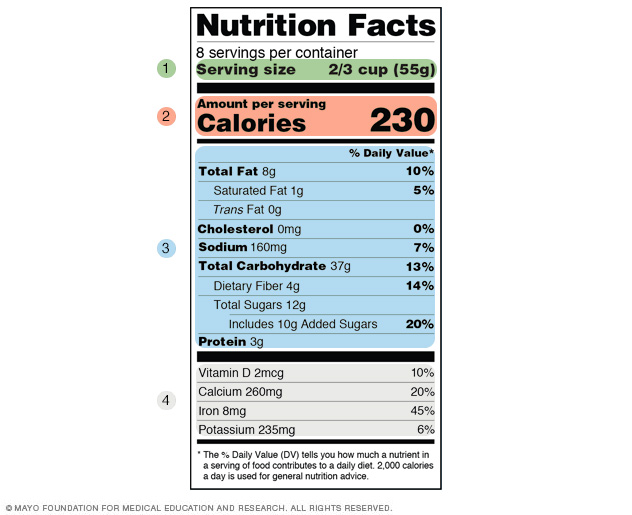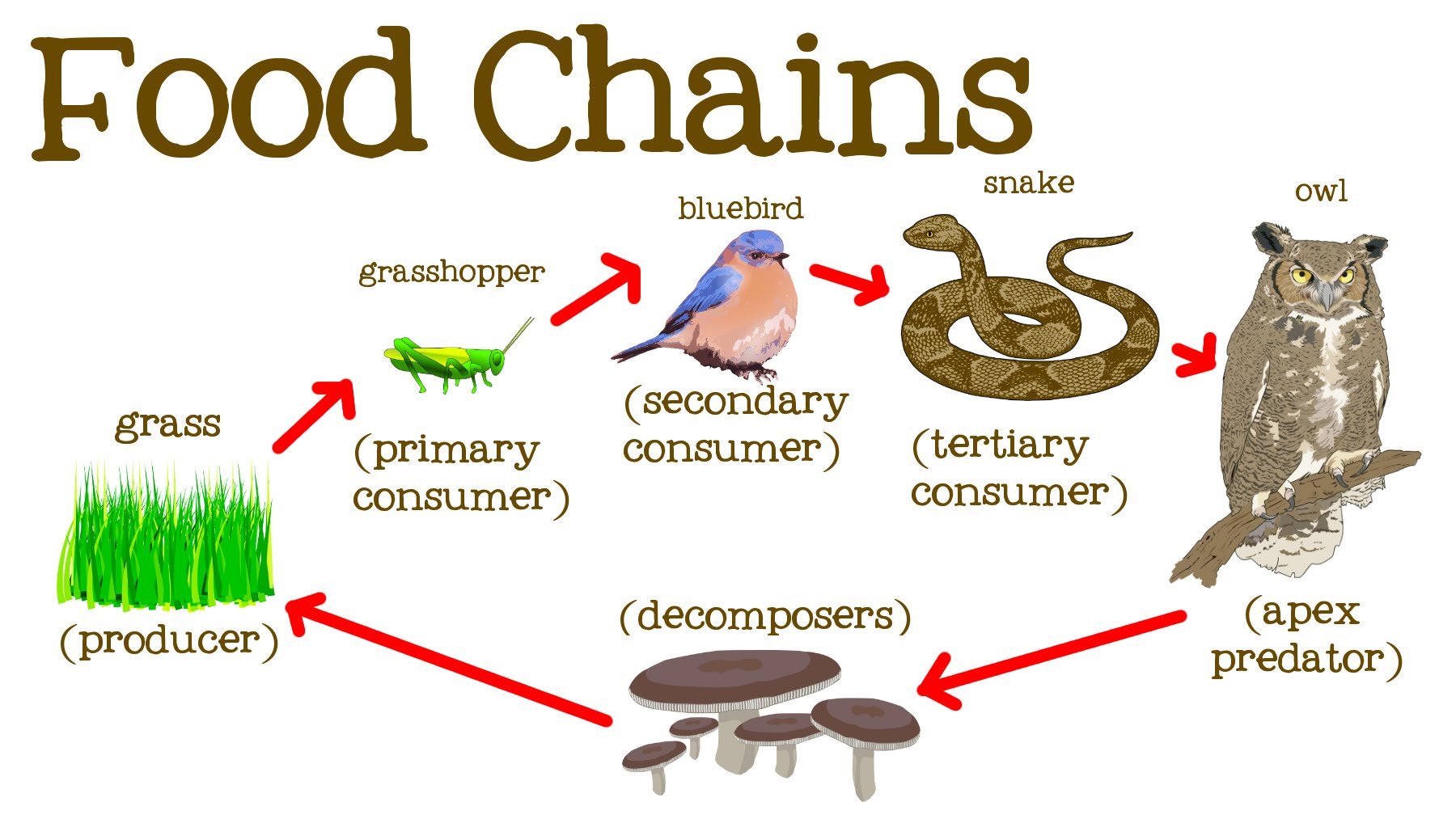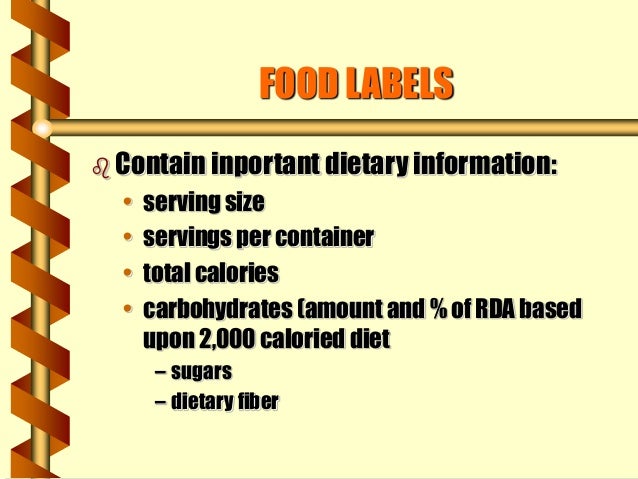41 carbohydrates on food labels
› cdc › urban_databaseNUTRITION: LESSON 2 NUTRIENT & FOOD LABEL FACTS Food Label Facts - Nutrition Facts. The food label, titled nutrition facts, can help you to choose foods within the pyramid groups. It is important to know that some foods are not required to have labels on them. These foods are fresh fruits, vegetables, meats, and generic foods. What Is the Difference Between Sugar & Carbs on Food Labels? Dietary fiber is part of the total carbohydrates, but unlike sugar and starch, fiber is not digestible. The percent daily value corresponds to 25 grams. Some food labels also make the distinction between soluble and insoluble fiber, the two types of fiber found in foods.
How are Carbohydrates & Dietary Fiber Labelled on Foods? The fibers listed below are the most common sources being added to food and can be declared on the Nutrition Facts label as dietary fiber. FDA approved isolated and synthetic non-digestible carbohydrates Gum Acacia Alginate Apple Fiber Bamboo Fiber Carboxymethylcellulose Corn Hull Fiber Cottonseed Fiber Galactooligosaccharides
Carbohydrates on food labels
How To Figure Out The Carbs On Nutrition Labels - Eat Out ... Trying to interpret the carbohydrates on nutrition facts labels can be downright confusing. There's a number for total carbohydrates but then there are subheadings for dietary fiber, sugars, and sometimes insoluble fiber, sugar alcohols, and other carbohydrates. What Does Everything Mean? Total Carbohydrate, shown in grams, is first. LABEL READING: CARBOHYDRATES AND SUGARS — Theresa Wright ... "Sugar" is one of two subheadings beneath "Total Carbs" on a food label. A serving's total sugar content appears in grams but not as a percentage of your daily intake. The word "sugar" includes a variety of simple sugars, which are compounds that your body can easily break down for immediate use. How to Use the Nutrition Facts Label - Diet Doctor This chocolate has 14 grams of carbohydrates per serving. 3. Calculate net carbs per serving Third, check the grams of dietary fiber per serving (circled in green, above). Subtract the fiber (green) from the total carbohydrates (blue) to get the net carbs. This chocolate has 9 grams of net carbs per serving (14g carbs - 5g fiber = 9g net carbs).
Carbohydrates on food labels. Food Labels and Counting Carbs - dummies Total Carbohydrate is listed in grams. Because %Daily Value is written in bold and off to the right side of the label, and lined up neatly with the actual amount, it is easy to allow your eye to zero in on the %Daily Value rather than the actual amount in grams. How to Read Food Labels - Your Low Carb Hub The below label shows there are 4.3g of carbs in a 15ml serving size which is equivalent to one tablespoon. 3.4g of this is sugar. There is 22.7g of sugar in 100ml, that's 5.6 teaspoons of sugar. The World Health Organisation (WHO) recommends no more than 5-10 teaspoons of added sugar in an entire day. Food Labels - Centers for Disease Control and Prevention If you eat the whole thing, you are eating 8 times the amount of calories, carbs, fat, etc., shown on the label. Total Carbohydrate shows you types of carbs in the food, including sugar and fiber. Choose foods with more fiber, vitamins, and minerals. Choose foods with lower calories, saturated fat, sodium, and added sugars. Avoid trans fat. How Do They Calculate Calories on Food Labels? - Food and ... Calories on food labels The 1990 Nutrition Labeling and Education Act (NLEA) for the first time required that food manufacturers put the amounts of nutrients and calories on the package label. Instead of using the bomb calorimeter method to establish calories in foods, manufacturers began using an easier process: the Atwater method.
Food Labels: Carbohydrates - Clemson University According to nutrition experts, carbohydrates should provide 45-65% of your total daily calories. That means carbohydrates should supply 900 calories or more in a 2,000-calorie-a-day diet. Facts on Food Labels Food labels contain clues to a food's carbohydrate content, including the amount per serving. Reading food labels: Tips if you have diabetes - Mayo Clinic Less than 5 grams of carbohydrates a serving Do the math Pay attention to serving sizes. The serving sizes listed on food labels may be different from the serving sizes in your meal plan. If you eat twice the serving size listed on the label, you also double the calories, fat, carbohydrates, protein, sodium and other ingredients. How to Read Carbohydrates on Food Labels - GlycoLeap When learning how to read carbohydrates on food labels, always remember that 1 serving of carbohydrate is equal to 15 g of carbohydrates. If you want to have a snack, it is recommended to eat no more than 1 to 2 servings of carbohydrates in one sitting. That would be around 15 to 30 g of carbohydrates. Snack = 15 - 30 g of carbohydrate › nutritionsource › food-labelUnderstanding Food Labels | The Nutrition Source | Harvard T ... Chile implemented the Law of Food Labeling and Advertising in 2016, comprised of mandatory front-of-package (FOP) warning labels, restrictions on child-directed marketing, and the banning of sales in schools of all foods and beverages containing added sugars, sodium, or saturated fats that exceeded set nutrient or calorie thresholds. [1]
How to Read Carbohydrates on Nutrition Labels|How to Read ... Breakdown of the Label If we break down the carbohydrates section of a nutrition label it usually has 3 parts. Carbohydrates -Sugars -Dietary fibre The top carbohydrates row is the total amount of carbs present. Made up of all the sugars, dietary fibre and starch, which is the remaining amount after the sugar and fibre. Understanding food labels - Diabetes UK All carbohydrates raise blood glucose levels. Labels on the front don't include the amount of carbs, so check the label on the pack for the total carbohydrate, which includes carbohydrates from starchy food as well as sugars. Carb Choices - Centers for Disease Control and Prevention *Yogurt is highly variable in carbohydrate content, so check the food label to be sure. Non-starchy Vegetables 1 serving = 5 grams carbohydrate. Non-starchy Vegetables; Food Serving Size; Vegetables, cooked: ½ cup: Vegetables, raw: 1 cup: Vegetable juice: Understanding Nutritional Labels | Beaumont | Beaumont Health Food labels will help you understand how many carbohydrates are in your food and how much fiber and sugar are included as well. As a general rule, the more fiber and the less sugar there is in the carbohydrate, the better it is for your body. Under the carbohydrate listing on food labels, you will the following as well: Dietary fiber Sugars
Sugars on food labels - Sugar Nutrition Resource Centre Packaged foods in Australian and New Zealand must provide nutrition information on the labels, including ingredients, nutrition information panels and content claims. Food Standards Australia New Zealand (FSANZ) are the regulatory authority tasked with setting food labelling standards. FSANZ do this work thorough developing a Food Standards Code.
Reading Food Labels for Carbohydrates - dummies to find the amount of carbohydrates in your foods, follow these steps:\r\n\r\n \tlook for the line that reads \"total carbohydrate\" on the label.\r\n\r\nthe value on this line will tell you how many grams of carbohydrates are in one serving of the food.\r\n \tcheck the number of servings per container to see if your package has one or more …
Reading Food Labels - American Diabetes Association The Nutrition Facts labels on foods are really the key to making the best choices. We'll cover the basics so that these labels make shopping easier for you. Get started Understanding Carbs You've heard it all. From carb-free to low-carb, to whole and empty carbs, it's hard to know what it all means. Learn more Food & Blood Sugar
What "Net Carbs" On Food Labels Actually Means A myriad of low-carb products are marketed as having "zero net carbs", but a closer look at the nutrition label reveals most of the "cancelled" carbs to be from dietary fiber or sugar ...
Learning To Read Labels :: Diabetes Education Online On a nutrition food label, subtract the fiber from the total carbohydrate amount. When you read food labels, the grams of sugar are already included in the total carbohydrate amount, so you do not need to count this sugar amount separately. The grams of sugar listed include both natural sugars, from fruit or milk, and added sugars.
Interactive Nutrition Facts Label - Food and Drug ... Sodium 430mg 17% Total Carbohydrate 46g 25% Dietary Fiber 7g Total Sugars 4g 4% Includes 2g Added Sugars Protein 11g 10% Vitamin D 2mcg 20% Calcium 260mg 35% Iron 6mg 6% Potassium 240mg The % Daily...
PDF Read the Food Label for Carbohydrates Food labels help you choose foods that are lower in calories and in carbohydrates and sweeteners. Here is a food label for a 12-ounce regular soda. The label provides lots of useful information. 1. Serving Size and Number of Servings The serving size is 12 ounces. There's 1 serving in this container. 2. Amount Per Serving
Low Carb Guide to Understanding Nutrition Labels Aim for 5g per day: 3g from food and salting your food to taste and an additional 2g from boullion. 6. Total Carbohydrate. The carbohydrate count is given as total grams, and then broken down into carbs from fiber and sugar. Focus on total carbohydrate. Sugar should be zero as often as possible (1-2g at most).
Get Smart On Carbs - American Diabetes Association In short, the carbs we consume impact our blood sugar—so balance is key! There are three main types of carbohydrates in food—starches, sugar and fiber. As you'll see on the nutrition labels for the food you buy, the term "total carbohydrate" refers to all three of these types.
How to Understand and Use the Nutrition Facts Label | FDA Dietary fiber, vitamin D, calcium, iron ad potassium are nutrients on the label that Americans generally do not get the recommended amount of. They are identified as nutrients to get more of....
How to Use the Nutrition Facts Label - Diet Doctor This chocolate has 14 grams of carbohydrates per serving. 3. Calculate net carbs per serving Third, check the grams of dietary fiber per serving (circled in green, above). Subtract the fiber (green) from the total carbohydrates (blue) to get the net carbs. This chocolate has 9 grams of net carbs per serving (14g carbs - 5g fiber = 9g net carbs).
LABEL READING: CARBOHYDRATES AND SUGARS — Theresa Wright ... "Sugar" is one of two subheadings beneath "Total Carbs" on a food label. A serving's total sugar content appears in grams but not as a percentage of your daily intake. The word "sugar" includes a variety of simple sugars, which are compounds that your body can easily break down for immediate use.
How To Figure Out The Carbs On Nutrition Labels - Eat Out ... Trying to interpret the carbohydrates on nutrition facts labels can be downright confusing. There's a number for total carbohydrates but then there are subheadings for dietary fiber, sugars, and sometimes insoluble fiber, sugar alcohols, and other carbohydrates. What Does Everything Mean? Total Carbohydrate, shown in grams, is first.





![Zero Carbs Foods Cheat Sheet by [deleted] - Download free from Cheatography - Cheatography.com ...](https://media.cheatography.com/storage/thumb/deleted-2754_zero-carbs-foods.600.jpg)






Post a Comment for "41 carbohydrates on food labels"